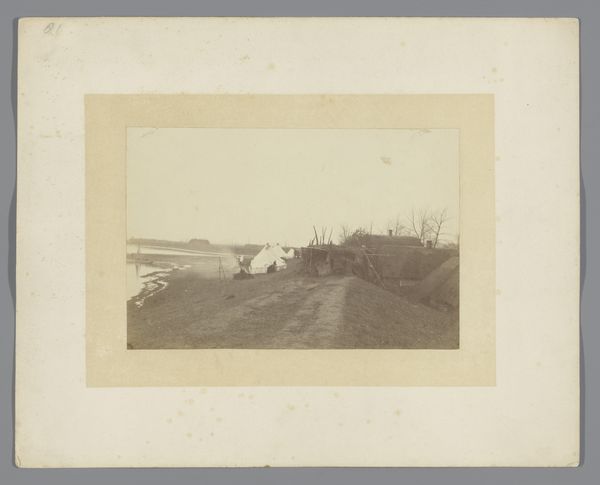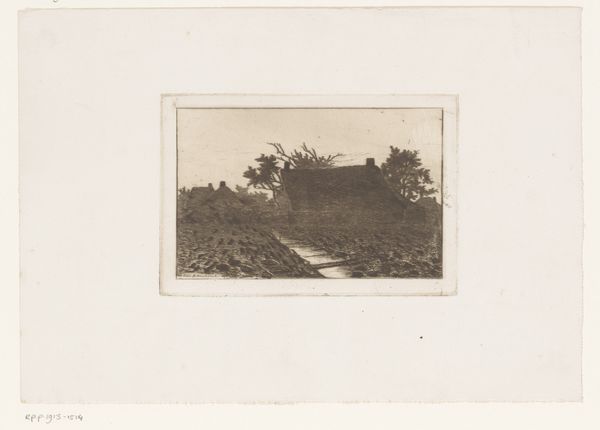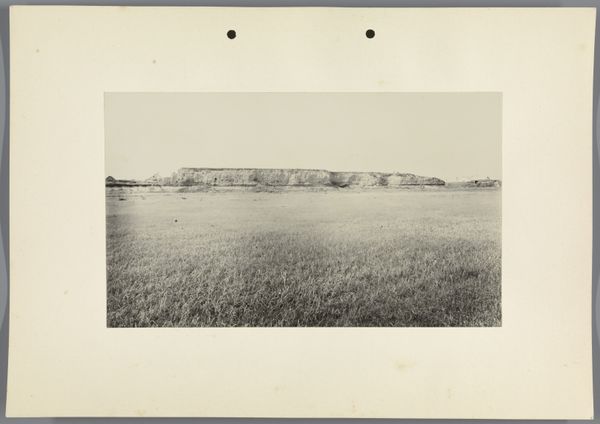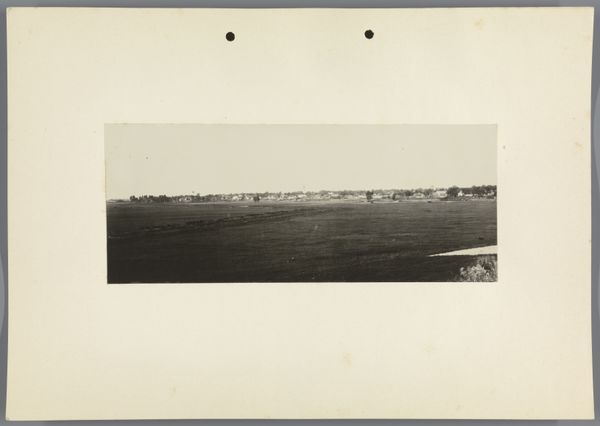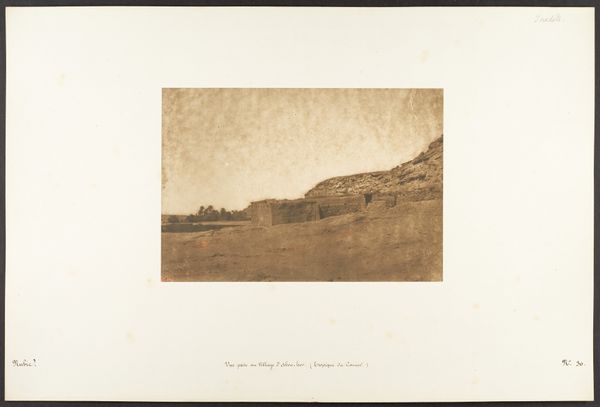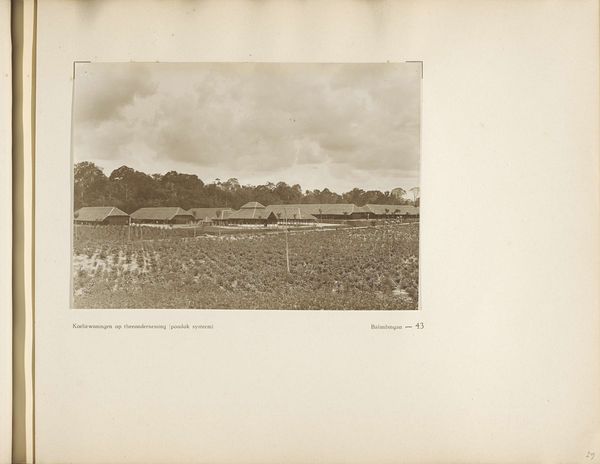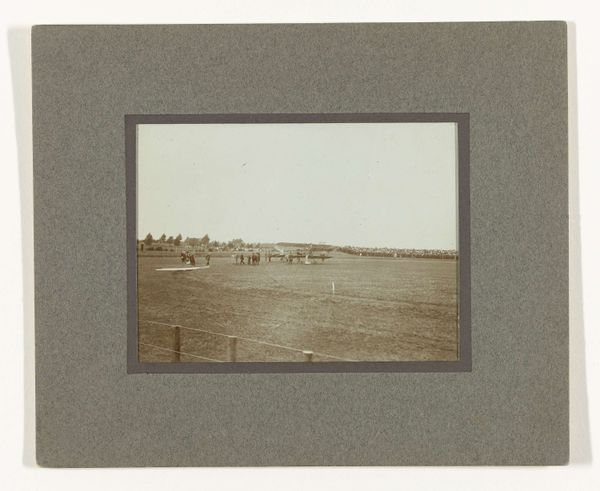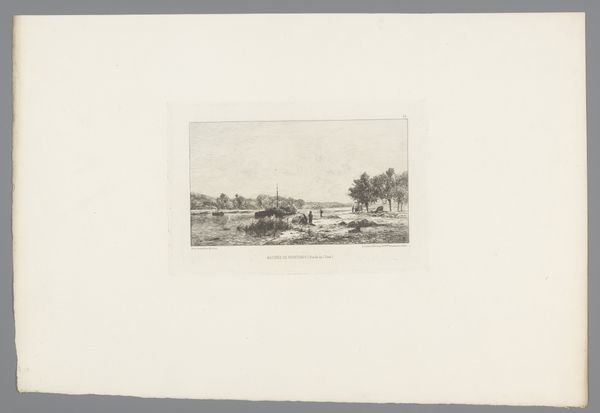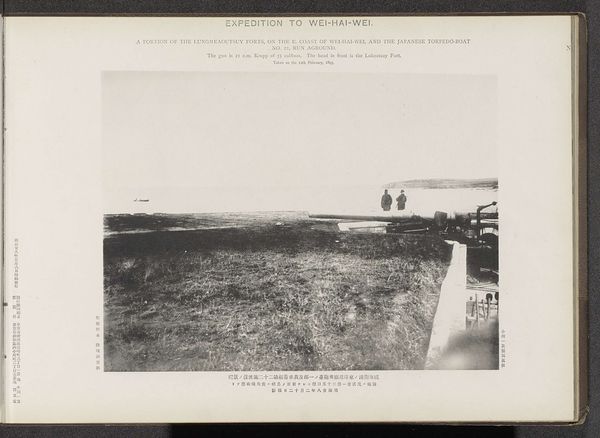
Pagina 108 van fotoboek van de Algemeene Vereeniging van Rubberplanters ter Oostkust van Sumatra (A.V.R.O.S.) c. 1924 - 1925
0:00
0:00
jwmeyster
Rijksmuseum
photography, albumen-print
#
aged paper
#
still-life-photography
#
toned paper
#
landscape
#
photography
#
orientalism
#
albumen-print
Dimensions: height 240 mm, width 310 mm
Copyright: Rijks Museum: Open Domain
Curator: Here we have "Pagina 108 van fotoboek van de Algemeene Vereeniging van Rubberplanters ter Oostkust van Sumatra (A.V.R.O.S.)", which roughly translates to "Page 108 of the Photo Album of the General Association of Rubber Planters on the East Coast of Sumatra". It's an albumen print from around 1924-1925, attributed to J.W. Meyster. It's part of the Rijksmuseum collection. Editor: My first thought is how effectively this image conveys both a sense of vastness and a feeling of constraint. The plantation stretches far into the distance, yet the composition, the way the road curves, suggests an inescapable system. It feels like looking at the cogs of an industrial machine. Curator: Absolutely. The photo was commissioned by an organization of rubber planters. Its purpose was promotional, showing the scale and organization of their enterprise. But through our modern lens, it exposes much more. Editor: You can see it in the traces of labor: the packed dirt road, the workers visible on the wagons, likely transporting raw rubber. It's a constructed landscape entirely dedicated to commodity extraction. What about the photographer, J.W. Meyster? Was he also tied to the industry? Curator: Indeed. Many photographers who worked in these colonial contexts were closely connected to the governing administrations and businesses, using the photographic medium as a tool for portraying an industrious view to a European audience, while also masking the complexities of colonial rule. Editor: Right, photography serving a propagandistic role. The "aged paper" quality that comes through on the page enhances that feel somehow. I wonder what processing chemicals were used to create this tonal range – substances handled to perpetuate the system represented by the image. Curator: Considering the wider album that this print comes from is critical. These images presented a particular vision of colonial productivity and power, circulated among shareholders and interested parties back in Europe, constructing specific narratives. Editor: The photograph romanticizes an exploitative relationship, turning resource extraction into a scenic view. The album format, the very paper it's printed on – each material choice contributing to the visual and material construction of colonial power. Curator: It’s a potent reminder of how images can be used to shape perceptions and even normalize exploitation, and the layers of social dynamics in photography, both at that time and today. Editor: Exactly. It invites us to consider the material basis and lasting legacies of colonial exploitation through this single, quietly unsettling landscape.
Comments
No comments
Be the first to comment and join the conversation on the ultimate creative platform.
